India, the birthplace of Buddhism, is home to numerous sacred sites that hold profound spiritual significance. These revered destinations attract pilgrims and travelers from around the world, offering a deep connection to the teachings and life of Buddha. From ancient monasteries to serene meditation spots, each site embodies a unique aspect of Buddhist heritage, providing an immersive experience into the religion's rich history and culture.
In our blog, 10 Must-Visit Buddhist Pilgrimage Sites in India, we take you on a journey through the most important Buddhist landmarks across the country. Discover the tranquil beauty, historical relevance, and spiritual ambiance of these destinations. Whether you are seeking enlightenment, historical knowledge, or simply a peaceful retreat, these pilgrimage sites promise a transformative experience. Read on to explore the spiritual heart of India and plan your visit to these sacred havens.
10. Sanchi, Madhya Pradesh
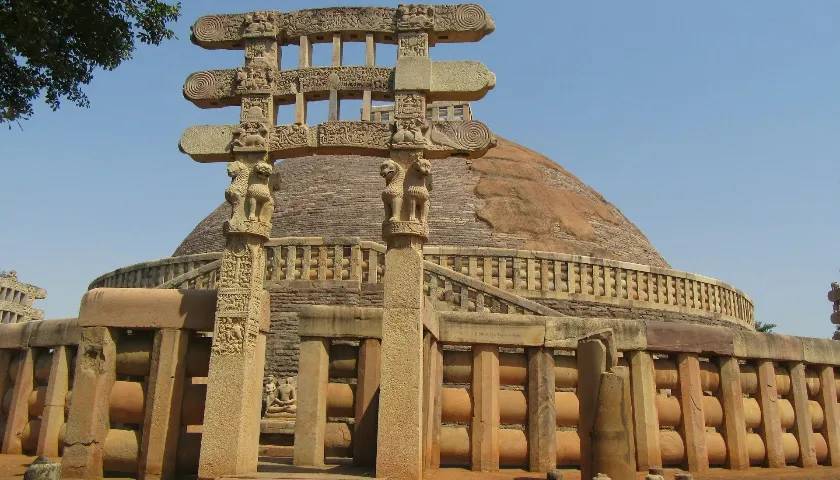
Sanchi, located in the state of Madhya Pradesh, is home to one of the most significant archaeological sites in India, revered for its ancient stupas and Buddhist monuments. The site dates back to the 3rd century BCE, and its historical significance is closely linked to Emperor Ashoka, who played a pivotal role in promoting Buddhism. Ashoka's patronage led to the construction of the famous Sanchi Stupa, which enshrines relics of the Buddha and serves as a crucial symbol of his teachings. The stupa, with its intricately carved gateways, reflects the grandeur of early Buddhist art and architecture and is considered one of the oldest surviving examples of such monumental structures.
Sanchi's significance in Buddhism extends beyond its architectural marvels. The site was a major center for Buddhist learning and pilgrimage, attracting monks and devotees from various regions. The various stupas, monasteries, and temples at Sanchi embody the teachings of the Buddha and the evolution of Buddhist art and culture. Visiting Sanchi offers a profound insight into the early spread of Buddhism in India and the dedication of Emperor Ashoka to the promotion of peace and spiritual enlightenment. This historical and spiritual heritage makes Sanchi a must-visit site for anyone exploring the roots of Buddhism in India.
9. Dharamshala, Himachal Pradesh
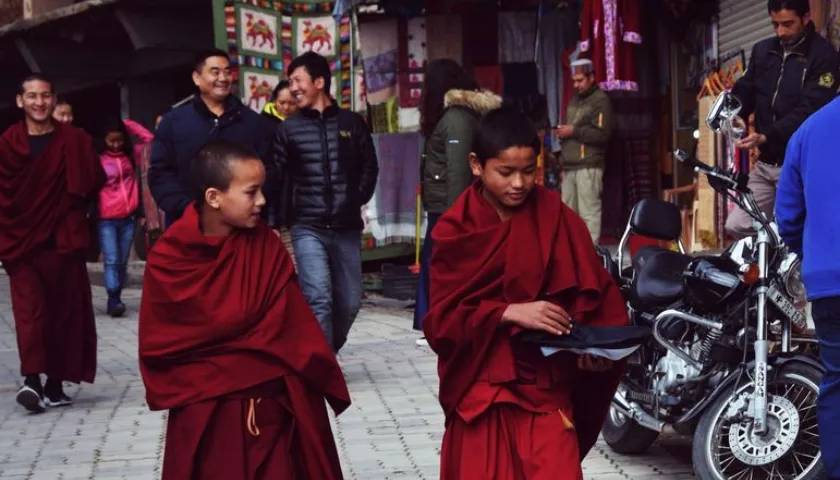
Dharamshala, nestled in the Himalayas of Himachal Pradesh, is a prominent destination in the Buddhist pilgrimage circuit, renowned for its serene environment and vibrant Tibetan culture. The town gained prominence as the home of the Dalai Lama and the Tibetan government-in-exile after the 1959 Tibetan uprising. This relocation marked Dharamshala as a significant center for Tibetan Buddhism and a beacon of hope for Tibetan exiles. The presence of the Dalai Lama has transformed Dharamshala into a hub for Buddhist teachings and practices, attracting thousands of visitors and practitioners each year.
The town’s spiritual significance is further enhanced by its many monasteries and meditation centers, which play a crucial role in preserving and promoting Tibetan Buddhism. Notable among these is the Namgyal Monastery, which serves as the personal monastery of the Dalai Lama and a center for Tibetan Buddhist studies. Dharamshala's unique blend of natural beauty, cultural richness, and spiritual depth makes it a vital pilgrimage site, offering visitors a profound connection to the teachings of the Buddha and the Tibetan Buddhist tradition.
8. Vaishali, Bihar

Vaishali, an ancient city located in the modern-day state of Bihar, holds a special place in the Buddhist pilgrimage circuit due to its significant historical and spiritual legacy. It was in Vaishali that the Buddha delivered his final sermon before his death, making it a key site in the life and teachings of the Buddha. The city was an important center during the Buddha’s lifetime, known for its vibrant community and rich culture. It was also the site of the second Buddhist council, which played a pivotal role in the consolidation of Buddhist teachings and practices.
Vaishali is renowned for its archaeological sites, including the Ashoka Pillar, which stands as a testament to Emperor Ashoka’s support of Buddhism. The ancient city’s ruins, stupas, and monasteries offer a glimpse into its historical significance and its role as a prominent center of Buddhist activity. Visiting Vaishali provides pilgrims and visitors with a profound connection to the Buddha’s last days and an understanding of the early development of Buddhism. Its historical importance and spiritual ambiance make it a must-visit destination for those exploring the roots of Buddhism.
7. Rajgir, Bihar
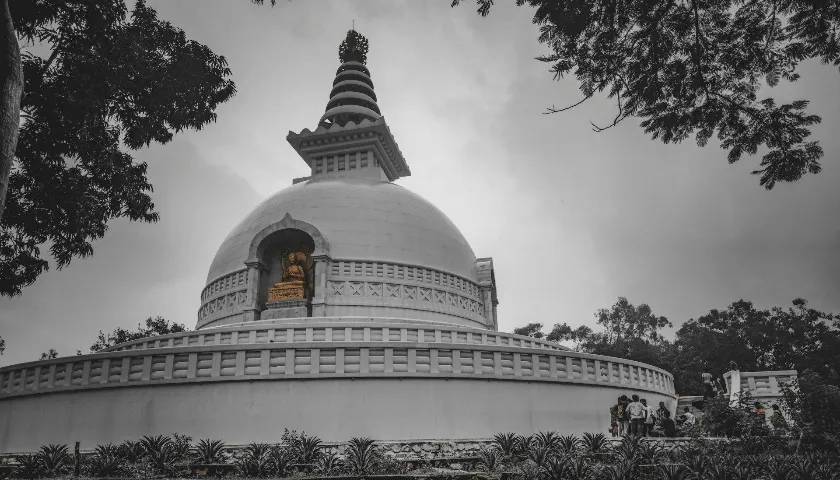
Rajgir, located in the Nalanda district of Bihar, is a pivotal destination in the Buddhist pilgrimage circuit due to its deep historical connections with the Buddha. This ancient city was a prominent center of Buddhism during the Buddha's lifetime and served as a significant location for several key events in his life. Rajgir was the site of the First Buddhist Council, held shortly after the Buddha’s passing, where his teachings were meticulously compiled and preserved. It was here that the Buddha spent considerable time meditating and teaching, further establishing its importance in Buddhist history.
The city is renowned for its numerous ancient relics and monuments, including the Vulture Peak (Griddhakuta Hill), where the Buddha delivered many of his sermons. Rajgir also boasts several significant Buddhist sites such as the Saptaparni Cave, where the First Buddhist Council took place, and the ancient hot springs, which were considered sacred by the Buddha and his followers. Rajgir’s rich history and spiritual heritage make it an essential destination for those seeking to understand the early development of Buddhism and the profound teachings of the Buddha.
6. Sankassa (Sankisa), Uttar Pradesh

Sankassa, also known as Sankisa, holds a revered place in Buddhist history due to its association with a significant event in the Buddha’s life. Located in the Farrukhabad district of Uttar Pradesh, this ancient site is renowned for being the place where the Buddha is believed to have descended from the Trayastrimsa Heaven after teaching his mother, Queen Maya, who had been reborn there. This miraculous event, known as the Buddha’s descent, marks a pivotal moment in Buddhist tradition, symbolizing his commitment to guiding all beings towards enlightenment.
Sankassa is home to several important archaeological remnants, including the iconic Ashoka Pillar, which was erected by Emperor Ashoka to commemorate the Buddha’s descent. The site also features a series of ancient stupas and monasteries that highlight its historical significance. Pilgrims and scholars alike visit Sankassa to connect with this profound event in Buddhist history and to explore the rich archaeological heritage that underscores its importance in the broader narrative of Buddhism.
5. Nalanda, Bihar
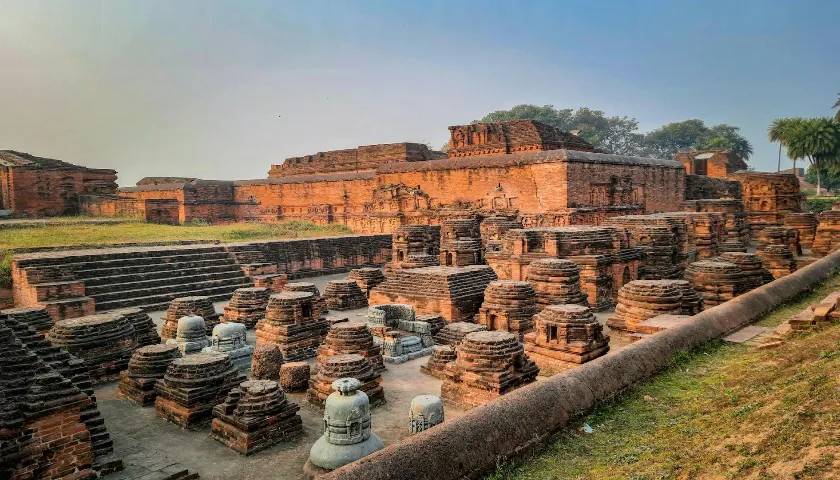
Nalanda, one of the most celebrated centers of learning in ancient India, stands as a beacon of Buddhist scholarship and intellectual pursuit. Located in the Nalanda district of Bihar, this ancient university was established during the reign of Emperor Kumaragupta I in the 5th century CE. It became a renowned seat of learning, attracting scholars from across Asia, including prominent figures like Xuanzang, who documented its academic excellence and vibrant intellectual life.
The historical significance of Nalanda extends beyond its role as a center for higher education. It was here that numerous Buddhist texts were studied and taught, and the university's scholars made substantial contributions to Buddhist philosophy, logic, and ethics. The extensive ruins of Nalanda, including its grand stupas, monasteries, and lecture halls, offer a glimpse into its former glory and its profound influence on Buddhist thought and practice. Today, Nalanda is revered as a symbol of the rich scholarly tradition in Buddhism and a testament to the enduring legacy of Buddhist education and intellectual exploration.
4. Sravasti, Uttar Pradesh

Sravasti, an ancient city located in the modern-day state of Uttar Pradesh, holds a prominent place in Buddhist history as one of the major centers of early Buddhism. It is revered as the site where the Buddha spent a considerable portion of his monastic life and delivered many of his teachings. The city's significance in Buddhist tradition is underscored by its association with numerous important events in the Buddha's life. It was here that the Buddha performed miracles, including the famous Twin Miracle, where he is said to have simultaneously emitted fire and water from his body to demonstrate his spiritual prowess.
Sravasti was also the venue for the Buddha's profound discourses on moral and ethical conduct, which laid the foundation for various aspects of Buddhist teachings. The remains of Sravasti's ancient monasteries, stupas, and the Jeta Grove, where the Buddha resided, continue to attract pilgrims and scholars. The city's historical and spiritual legacy offers deep insights into the early days of Buddhism and its development, making it a crucial destination for those seeking to understand the roots and spread of Buddhist practice and philosophy.
3. Kushinagar, Uttar Pradesh

Kushinagar, located in the northern state of Uttar Pradesh, is an extraordinarily significant site in Buddhist history, renowned as the place where Siddhartha Gautama, the Buddha, attained Parinirvana, or final Nirvana. This sacred city marks the end of the Buddha's earthly journey and holds deep spiritual importance for Buddhists worldwide. According to tradition, it was in Kushinagar that the Buddha delivered his final teachings and entered a state of ultimate liberation, providing profound insights into the nature of existence and the cessation of suffering.
The archaeological remains at Kushinagar include the famous Mahaparinirvana Temple, which houses a colossal reclining Buddha statue symbolizing the Buddha's final moments. The site also features the Ramabhar Stupa, believed to be the location where the Buddha's cremation took place. These historic and sacred landmarks, along with the well-preserved relics and stupas, make Kushinagar a pivotal pilgrimage destination. For those exploring the Buddha’s life and teachings, Kushinagar offers a poignant reflection on the culmination of his spiritual journey and the enduring legacy of his enlightenment.
2. Sarnath, Uttar Pradesh
Sarnath, situated near Varanasi in Uttar Pradesh, is a pivotal site in Buddhist history as the location where Siddhartha Gautama, the Buddha, delivered his first sermon after attaining enlightenment. This sermon, known as the "Dhammacakkappavattana Sutta" or "Setting the Wheel of Dharma in Motion," introduced the foundational teachings of Buddhism: the Four Noble Truths and the Eightfold Path. This event marked the commencement of the Buddha’s mission to impart his insights to the world and establish the Buddhist monastic community.
The archaeological treasures of Sarnath include the Dhamek Stupa, a massive structure commemorating the Buddha’s first sermon, and the Chaukhandi Stupa, which is traditionally believed to be the site where the Buddha met his initial disciples. The Sarnath Museum, renowned for its collection of ancient artifacts, features the Ashoka Pillar, renowned for its detailed carvings and inscriptions. These significant historical and spiritual landmarks make Sarnath a crucial pilgrimage destination, reflecting the early dissemination of the Buddha’s teachings and the establishment of Buddhism as a major world religion.
1. Bodhgaya, Bihar
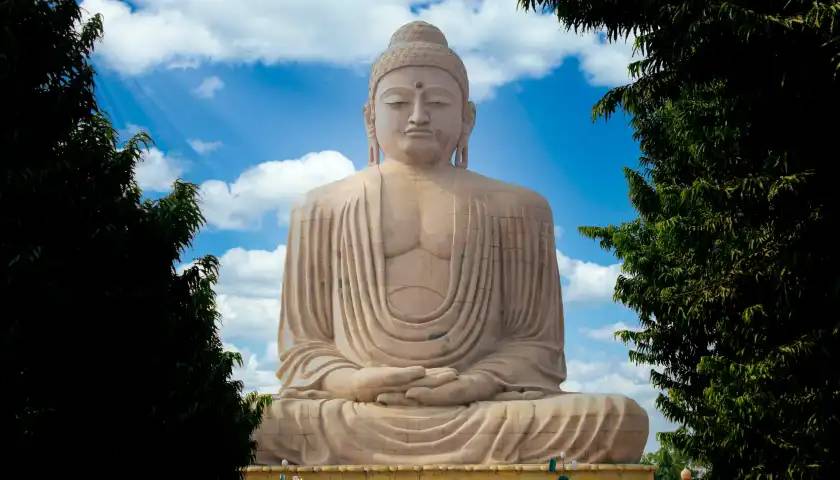
Bodhgaya, located in Bihar, is the most revered site in Buddhism as it is the place where Siddhartha Gautama, the Buddha, achieved enlightenment under the Bodhi Tree. This momentous event, which took place around 2,500 years ago, marked the culmination of Siddhartha’s profound quest for understanding and liberation from the cycle of birth and rebirth. The Mahabodhi Temple, a UNESCO World Heritage Site, stands at the core of Bodhgaya and houses the sacred Bodhi Tree, which is believed to be a direct descendant of the original tree under which the Buddha meditated.
The significance of Bodhgaya in Buddhism cannot be overstated, as it represents the very foundation of Buddhist practice and philosophy. Pilgrims from around the world visit Bodhgaya to pay homage and seek spiritual inspiration. The site is also a hub for Buddhist learning and meditation, with numerous monasteries and meditation centers, making it a center of spiritual renewal and reflection. Bodhgaya’s historical and spiritual legacy makes it the ultimate pilgrimage destination for Buddhists and a symbol of enlightenment and the path to liberation.
As we conclude our exploration of the 10 Must-Visit Buddhist Pilgrimage Sites in India, we hope you’ve found inspiration in the rich history and spiritual significance of these sacred destinations. Each site offers a unique glimpse into the life and teachings of Buddha, providing invaluable insights into his path to enlightenment. From the serene surroundings of Bodhgaya, where Buddha attained enlightenment, to the profound historical significance of Sarnath, these locations are more than just pilgrimage sites—they are profound experiences that connect us with the essence of Buddhism.
If you’re ready to embark on a transformative journey and experience these sacred sites firsthand, we invite you to book your Buddhist pilgrimage tour with us. Visit our Buddhist Pilgrimage Tours in India page to explore our carefully curated packages designed to offer you an immersive and spiritually enriching experience. For personalized assistance or to discuss your travel plans, feel free to contact us. Let us help you walk in the footsteps of Buddha and discover the profound peace and wisdom these holy sites have to offer. Your spiritual adventure awaits!









